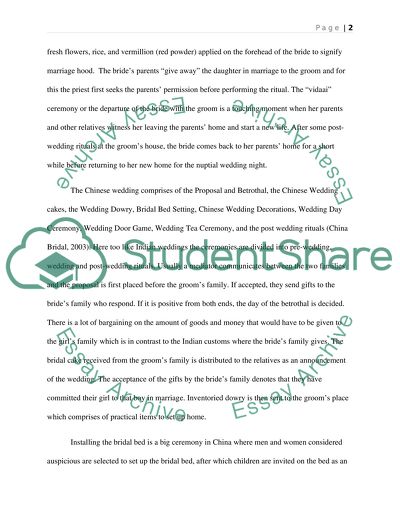Cite this document
(“Impressions and Thoughts on Weddings in other Cultures Essay”, n.d.)
Retrieved from https://studentshare.org/psychology/1430624-impressions-and-thoughts-on-weddings-in-other
Retrieved from https://studentshare.org/psychology/1430624-impressions-and-thoughts-on-weddings-in-other
(Impressions and Thoughts on Weddings in Other Cultures Essay)
https://studentshare.org/psychology/1430624-impressions-and-thoughts-on-weddings-in-other.
https://studentshare.org/psychology/1430624-impressions-and-thoughts-on-weddings-in-other.
“Impressions and Thoughts on Weddings in Other Cultures Essay”, n.d. https://studentshare.org/psychology/1430624-impressions-and-thoughts-on-weddings-in-other.


